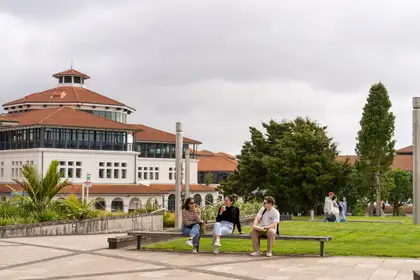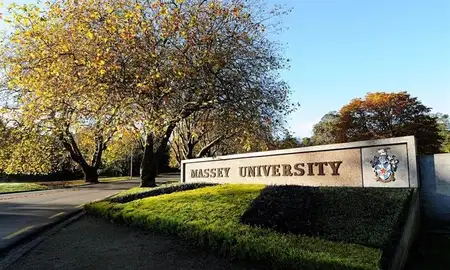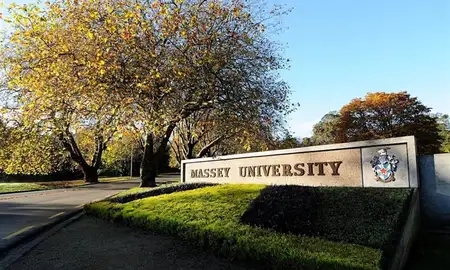
Currently less than 10% of our total student body are school leavers. The remaining 90%+ is based on students over 20 years old, who may opt to study on campus or through the growing trend of online study.
If we look around the world right now – particularly in the United Kingdom and Australia but also beyond – universities are struggling due to underfunding. So, it’s not surprising that New Zealand universities are in the same position. This has broadly been acknowledged by governments and agencies, as funding has not kept up with inflation and domestic tuition fees have been hindered by regulatory controls – yet we want world-class institutions that attract the best talent from around the globe. It also highlights how international student fee income has propped up the sector, becoming the buffer for underfunding.
Recent media articles have suggested Massey University’s financial position is “high risk”, leading on to discuss a decline in the school leaver market share as the rationale. As an evidence-based and data driven thinker, I challenged myself to check if that statement was correct, and whether the statement took into account the context of our student demographic. Using publicly available data through Education Counts, for Equivalent Full-Time Students (EFTS), I found that in 2013, Massey had approximately 9% market share of domestic ‘school leavers’ in the university sector, and yes, this has reduced over the last 10 years to just over 6% in 2022. This means we’ve had an approximate drop of 3% of domestic school leavers market share (age 15-19) over the last 10 years, but if we put this into context, this only represents a small proportion of Massey’s student body. Currently less than 10% of our total student body are school leavers. The remaining 90%+ is based on students over 20 years old, who may opt to study on campus or through the growing trend of online study. In fact, enrolments to Massey via distance have been growing steadily.
Alongside the domestic school leaver market share drop of 3%, our domestic market share of students aged between 20-24 also dropped by 2%, from 11% to 9% over the last 10 years. This is perhaps a more significant group, as proportionately this made up of just over a third of the total student body. Of those aged 25+, we have remained static in our market share – although we lost a small proportion between 2021 and 2022 – this group represents over half of our domestic student body. Does that make us fragile to school leavers? The easy answer is ‘sort of’, because these students tend to study on campus and are full time. But I think the problem is that we get lost in generic statements, alongside comparisons to other universities, who are heavily reliant on school leavers. I’ll admit - we absolutely need to regain market share for school leavers, but more accurately regain market share for 20–24-year-olds, alongside maintaining our share of learners 25+.
Ironically, in 2021, we had to close second semester enrolments as we forecast to exceed the Tertiary Education Commission’s (TEC) allocation caps and to avoid being penalised financially, as the pandemic saw many Kiwis stay home and take up study. That was great, and totally what we are here to support, however, this was also one of our traditional recruitment periods where we would attract 20–24-year-olds.
Hindsight is a wonderful thing – but I often ask myself if we had stayed open (and taken the financial penalty and heat from the TEC), would we be in our current predicament?
In an environment that offers no ‘real’ changes to the government funding settings, we’re left to look at ourselves. This has meant prudent but realistic planning and cost controls, a refocus on rebuilding market share (particularly in the areas we have dropped), diversification of income streams and the return of international students. Prior to the pandemic, the international education sector was a major source of revenue, but COVID-19 reduced our international student cohort significantly. International EFTS increased by more than 17% last year compared to 2022 and are increasing again in 2024 – but we’re keen not to return to a reliance on international student fee income, even though that might be a necessity in the short-term.

Dr Tere McGonagle-Daly, Deputy Vice-Chancellor Students and Global Engagement.
Massey is a unique place to study, and always has been. Our student cohort is diverse and not comparable to other New Zealand universities in the traditional way. I’m not trying to suggest we should be treated any differently, but we should be recognised for the role we play and the contributions we make across New Zealand and particularly for our regional communities who without us, are perhaps not able to access tertiary education at all. Let’s be frank though – we don’t specialise in the school leaver market (although we plan to build back our lost market share), but we do offer up flexible ways of learning for students who often have to balance work, family, sport, or other commitments while furthering their education. We aren’t like other universities, and that’s OK. In fact, it’s one of the things I love about Massey. We have three distinct campuses and our distance students (our largest student cohort) spread across the motu.
We also have a growing global footprint that is leading the way for New Zealand and are living proof you can study with Massey from anywhere, any time, and at any life stage.
The success of our students is something that we are passionate about and have been investing heavily into through our Learner Success Plan, Pūrehuroatanga. Last year, we celebrated an increase in course completion rates, as reported by the Tertiary Education Commission. We have the highest completion rates for on-campus Government-funded learners in the country, as well as the highest completion rates for our on-campus Māori and Pacific learners. We are obviously doing something right, and we continue to invest in our students, even while we are financially constrained.
And, despite the serious underfunding from the Government, over more than a decade now, all Aotearoa New Zealand universities rose in the 2024 Quacquarelli Symonds (QS) World University Rankings – with Massey moving to one of its best positions at 239th globally and 3rd in New Zealand. We truly punch above our weight on the global stage. We also rose 44 places in the QS Sustainability Rankings to be ranked 81st in the world, and third equal amongst New Zealand universities, highlighting our dedication to the United Nation’s Sustainable Development Goals.
So, it’s not all doom and gloom out there. The future is bright. While I can understand the reasons we have been called ‘high risk’ financially, we have no debt, and no plans to borrow. We have a plan for our way out of this situation, and I have the utmost confidence in our people that we will come out of this stronger, having learnt some tough (but necessary) lessons, and truly on track to deliver world-class teaching, learning and research for Aotearoa and the world.
Dr Tere McGonagle Daly is the Deputy Vice-Chancellor Students and Global Engagement at Massey University, and has been in that role since 2019.
Related news
Massey shines in Sustainability Rankings
Quacquarelli Symonds (QS) has released its 2023 Sustainability Rankings – and it’s good news for Massey, as the university has risen 44 places to be ranked 81st in the world.

Opinion: Turning the tide for our Pacific learners
By Professor Giselle Byrnes and Professor Palatasa Havea

Massey climbs more than 50 places in latest QS World University Rankings
The university has climbed in the latest Quacquarelli Symonds (QS) World University Rankings, up 53 positions compared to last year.
